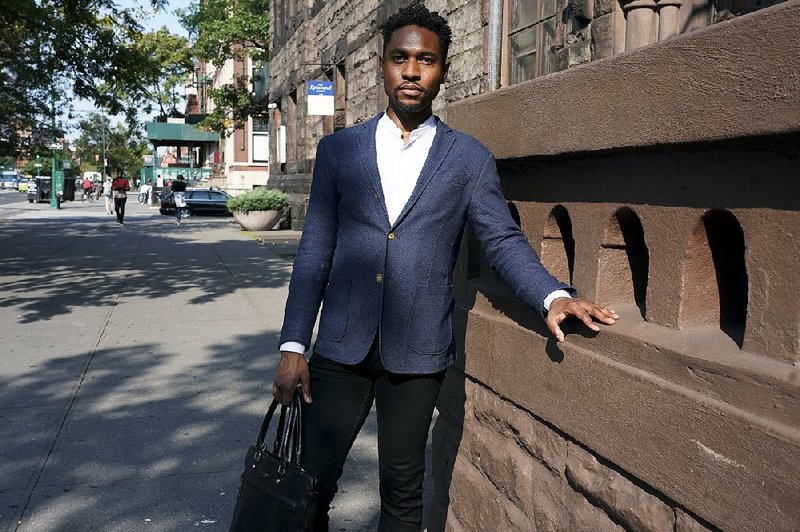NEW YORK -- In a tower above Malcolm X Boulevard in Harlem are more than 40 large bells that were fabricated in the Netherlands -- they form the carillon of a once-proud church, St. Martin's, and are one of only three carillons in New York. The queen mother of the Netherlands attended a dedication ceremony in the 1950s. The current Episcopal bishop of New York says it was "a giant big deal" that she was there.
The bells were last played in July, and then only briefly during an inspection by a carillon expert. The last time they were heard regularly was in 2013 because the carillon has been "deemed structurally unsound," said Malcolm Merriweather, a member of the congregation. He is also a conductor and an assistant professor of music at Brooklyn College.
The carillon has become a flashpoint in a dispute among some members of St. Martin's and the Episcopal Diocese of New York over how to repair the instrument and the rest of the decaying church building. In August, the bishop replaced the congregation's lay leaders after failing to come to terms on $2.4 million that he offered to advance for the repair work. He wanted St. Martin's to repay the money to the diocese by selling one of three nearby brownstones that it owns.
Real estate also figures in the conversation at another nearby Harlem church, Metropolitan Community United Methodist Church. Like St. Martin's, Metropolitan Community is in such bad repair that services are no longer being held in the sanctuary, where the ceiling collapsed a couple of years ago.
The struggles of the two congregations are emblematic of the troubles afflicting what was once one of the most church-filled and church-conscious neighborhoods in the United States. But attendance in Harlem has dwindled as America has become less religious, and some congregations in Harlem have merged with others in an effort to remain viable.
At Metropolitan Community, the Rev. Richard Hayes said the plan was to sell some of the church's real estate -- including the sanctuary. Hayes said the congregation would then build a new building on a nearby lot that the church owns and does not plan to sell.
Selling the sanctuary building has angered people who do not want to lose a part of Harlem's past. Among them is Derek Johnson, who grew up in Metropolitan Community, even as he acknowledged that it was hard to describe the building as being "in a state of anything other than perhaps unsalvageable disrepair."
But he also talked about accountability "both for the community of people who count themselves as worshippers and congregants" and for church leaders who, he said, "recognizing that these churches have lost their relevance -- the relevance of yesteryear that commands the kind of maintenance funding you'd have to put in to sustain them -- have become accountants rather than spiritual fiduciaries."
What has played out at St. Martin's over the last few months has been a complicated tale of architects and contractors, some brought in by the lay leaders of the church, others by the Episcopal diocese. The vestry -- the parish's governing body, made up of lay leaders -- wrote the diocese in July with concerns that the diocese "would seek to pass along the costs" to the vestry, even though the vestry had not been involved in hiring the architects and contractors the diocese sent in. Some parishioners complained of a lack of transparency on the diocese's part.
Bishop Andrew Dietsche said it was not the carillon that had brought St. Martin's to his attention, but a structural survey conducted several years ago. By spring 2017, Dietsche said the architect who had conducted the survey was warning that "the bell tower is in such urgent trouble that it is not inconceivable it could collapse in the next 30 days."
The architect's report also said the tower was "supported primarily by gravity," after noting that a brick backup wall "effectively has no mortar." The roof and floor in the tower had been "saturated with water for so many years that the wood is severely rotted."
In 2017, Dietsche offered the church what amounted to a loan of $2.4 million. "I said, 'You don't have any money, but you do have what most parishes don't, a surplus of real estate," he said. He had called for St. Martin's to repay the money by selling one of three nearby brownstones that it owns.
The bishop said that time passed, but no one from the vestry signed the contract he had prepared to codify the deal for the diocese to advance the money to the church. "I came to wonder if they were willing to sell the brownstones," he said of the members of the vestry.
In August, he dissolved the vestry after designating St. Martin's a vulnerable parish under church law, steps he said he took because of the "absolutely on-fire urgency of getting the necessary contract agreements signed so we could go forward with the restoration." By then, he said, the diocese had put about $400,000 into preparatory rehabilitation work.
He noted that he had not required St. Martin's to transfer to the diocese the titles to its property, as he could have, and that if the brownstones were sold, the money "will go into the parish's accounts," not the diocese's.
"My interest is in stabilizing and restoring St. Martin's. It begins and ends with that." He also said, "That building must be saved."
Religion on 10/27/2018

